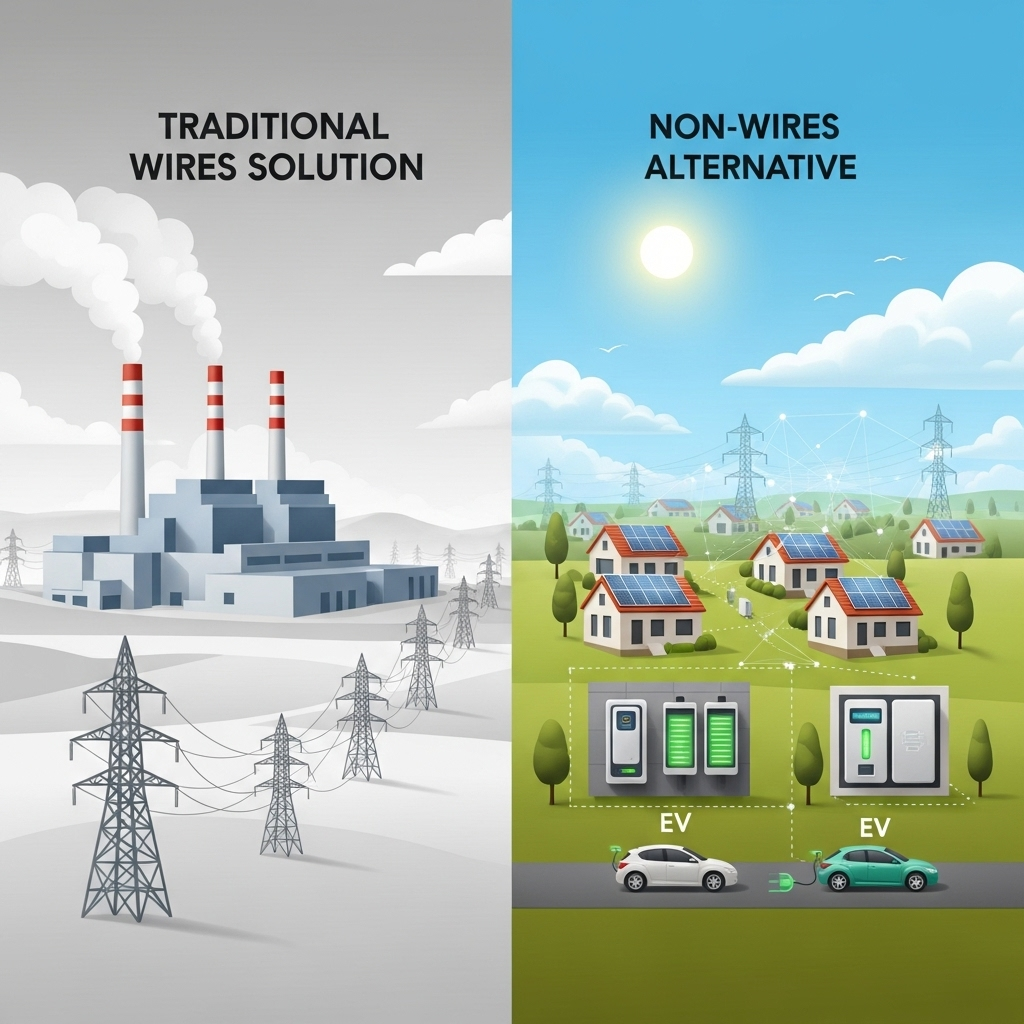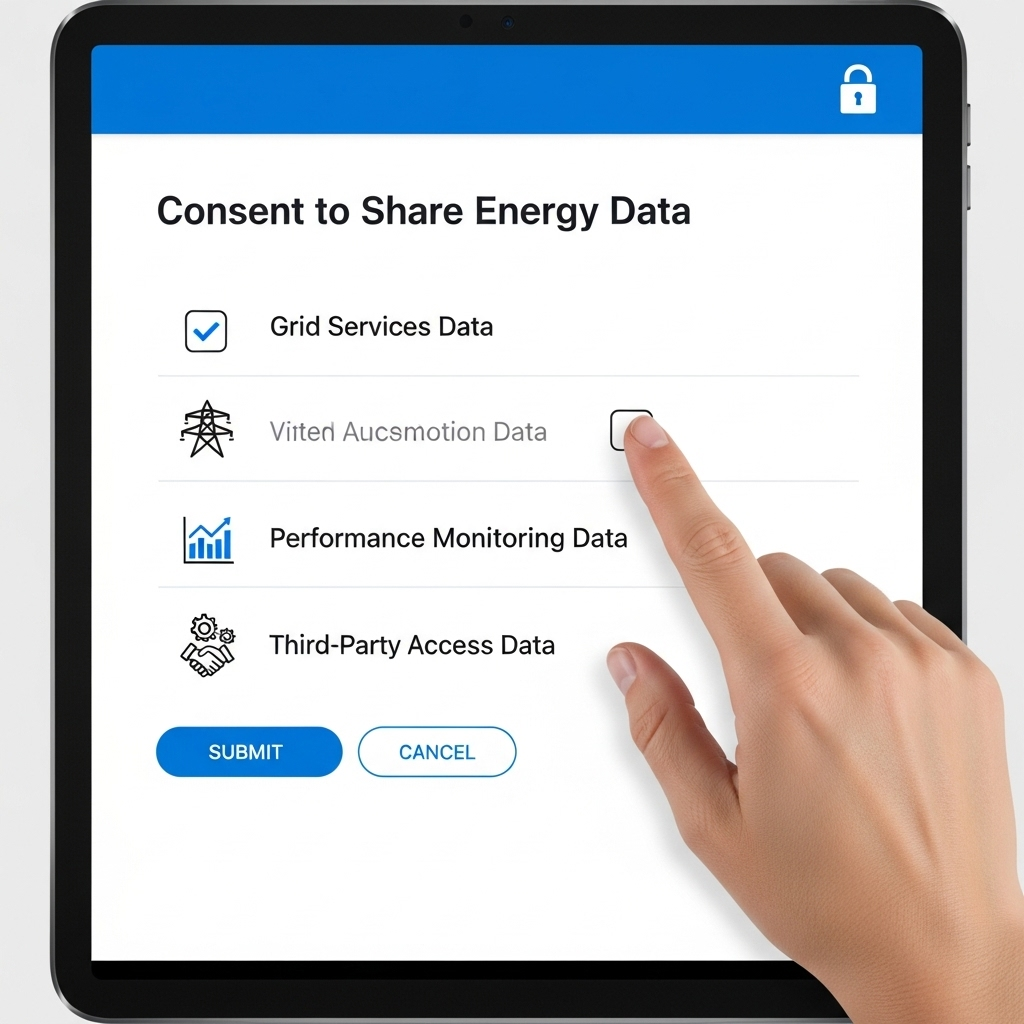The electricity grid is undergoing its most significant transformation in a century. The traditional model of one-way power flow from large, centralized plants is giving way to a more dynamic, decentralized network. This evolution is marked by the transition from Distribution Network Operators (DNOs) to Distribution System Operators (DSOs). Looking toward 2025, this shift is accelerating, fueled by strategic investments in Non-Wires Alternatives (NWA). This change presents new challenges and immense opportunities for creating a more resilient, efficient, and sustainable energy system.
Understanding the Shift from DNO to DSO
The change from a DNO to a DSO is not just a change in name; it represents a fundamental rethinking of how electricity distribution works. It's a response to the rapid growth of distributed energy resources (DERs) like solar panels, battery storage, and electric vehicles (EVs).
What Defines a Distribution Network Operator (DNO)?
Traditionally, a DNO's primary function is to maintain the physical infrastructure—the poles and wires—that delivers electricity from the high-voltage transmission system to homes and businesses. They operate a passive network, ensuring power flows reliably in one direction. Their planning focuses on building and reinforcing infrastructure to meet predicted peak demand, a process that can be slow and expensive.
The Rise of the Distribution System Operator (DSO)
A DSO, in contrast, actively manages the grid. They orchestrate a complex, two-way flow of electricity. A DSO not only delivers power but also manages the power generated by DERs connected to their network. Their role is to balance supply and demand at a local level, maintain grid stability, and optimize the use of all available energy resources. This active management is critical as more intermittent renewable energy sources come online.
Key Drivers for the DSO Transition
Several factors are pushing utilities to adopt the DSO model. The primary driver is the massive influx of renewable energy. Solar and wind power are variable, and a DSO is better equipped to manage this variability. The electrification of transport, with millions of EVs connecting to the grid, creates new demand patterns and opportunities for smart charging. Furthermore, customers and regulators are demanding greater grid resilience in the face of extreme weather events, which a more flexible, decentralized grid can provide.
Investing in Flexibility: The Core of NWA
As DSOs take on more complex responsibilities, they need new tools. Non-Wires Alternatives are emerging as a primary solution, offering flexibility and intelligence where traditional infrastructure only offers raw capacity. NWA investment is a cornerstone of modern distribution planning.
What Are Non-Wires Alternatives?
Non-Wires Alternatives are solutions that use DERs, energy efficiency measures, and demand response programs to defer or replace the need for traditional grid infrastructure like new substations or power lines. Instead of building a new substation to handle peak summer demand, a utility might use a combination of battery storage systems, incentives for customers to reduce energy use during peak hours, and managed EV charging.
Why NWA Investment is Gaining Momentum
Investment in NWAs is growing because they often provide a more cost-effective and faster solution than traditional 'poles and wires' projects. According to a report from the International Energy Agency, World Energy Investment 2023, investment growth for technologies like solar PV and battery storage is on a strong upward trajectory. This trend supports the NWA model, as these technologies are the building blocks of non-wires solutions. NWAs can be deployed in targeted locations precisely where they are needed, offering a scalable and modular approach to grid management.
Real-World Applications of NWA
Utilities are already using NWAs to solve real grid challenges. A notable example involves UK Power Networks, which is transitioning to a DSO. As part of its planning, it identified opportunities to use DERs to defer infrastructure investments. The China Power System Transformation report highlights that UKPN found a potential to manage up to 206 MW of capacity on its high-voltage networks by 2023 using flexible resources. This strategy allows them to manage grid constraints from planned maintenance or defer costly reinforcement projects by using DERs like battery storage and demand response from industrial customers.
Navigating the Investment Landscape for 2025
The 2025 outlook shows a clear need for increased and smarter investment in our power grids. The focus is shifting from simply expanding capacity to enhancing flexibility and intelligence through strategic deployment of assets like energy storage.
Global Investment Trends in Power Infrastructure
The global energy landscape is at a crossroads. The IEA's analysis in World Energy Investment 2023 indicates that while clean power investment is growing, overall spending on generation, grids, and storage needs to rise significantly to meet climate pledges. The report notes that investment in electricity grids needs to increase considerably to support higher penetrations of renewables. This highlights a critical gap where NWA investment can play a pivotal role, offering a capital-efficient way to enhance grid capacity without the massive outlay required for traditional infrastructure alone.
Strategic Planning for DSO Transition
A successful transition requires a clear plan. The IEA suggests that operators should establish a flexibility roadmap based on their expected energy mix. This involves proactive policy and regulatory reforms to keep pace with technological change. Integrating planning for the energy and transport sectors is also vital, as EV adoption will be a defining feature of grid evolution. By requiring flexibility capabilities in new assets and creating innovative regulations for cost recovery, DSOs can effectively deploy DERs and build a more robust system.
| Feature | Traditional Grid Reinforcement | Non-Wires Alternative (NWA) |
|---|---|---|
| Primary Method | Building new substations, poles, wires | Deploying battery storage, demand response, energy efficiency |
| Deployment Timeline | Years (permitting, construction) | Months (modular, less intrusive) |
| Capital Cost | High upfront investment | Lower initial cost, scalable investment |
| Scalability | Lumpy, difficult to scale down | Highly modular and scalable |
| Environmental Impact | Significant land use, construction disruption | Minimal physical footprint |
| Value Stream | Capacity only | Capacity, grid services, resilience, energy arbitrage |
The Impact of High-Performance Storage
The effectiveness of any NWA strategy hinges on the reliability of its components, particularly energy storage. High-performance battery systems, especially those using Lithium Iron Phosphate (LiFePO4) chemistry, are central to this. They offer the safety, longevity, and operational parameters needed for grid-scale applications. When a DSO deploys a battery system to defer a substation upgrade, its performance is paramount. As detailed in the ultimate reference for solar storage performance, metrics like a high cycle life and a deep depth of discharge (DoD) are not just technical specifications; they are direct inputs into the financial viability of an NWA project. A battery that can perform more cycles at a greater depth delivers more value over its lifetime, making the NWA a more attractive investment compared to traditional wires.
Addressing Hurdles on the Path to a Modern Grid
The transition to a DSO model powered by NWAs is not without challenges. Overcoming regulatory, technical, and financial hurdles is key to unlocking the full potential of a flexible grid.
Regulatory and Market Reforms
Existing regulations were designed for the DNO model. New market structures are needed to properly value the services that DERs provide, such as frequency regulation and voltage support. Performance-based regulation, which rewards utilities for achieving outcomes like improved reliability and DER integration, can create powerful incentives for NWA investment.
Technical Integration and Coordination
Managing potentially millions of DERs in real-time is a significant technical challenge. It requires advanced distribution management systems (ADMS), robust communication networks, and sophisticated forecasting tools. Standardization of communication protocols and cybersecurity measures are also critical to ensure the secure and reliable operation of a highly distributed grid.
Ensuring Financial Viability
For utilities, the financial case for NWAs must be clear. This involves developing new cost-recovery mechanisms that allow them to invest in NWAs and earn a return, similar to how they invest in traditional infrastructure. For asset owners, participating in NWA programs must be profitable. This requires transparent market signals and fair compensation for the grid services their assets provide.
Shaping the Future of Energy Distribution
The move from DNO to DSO is an essential evolution for the power grid. As we look to 2025 and beyond, it is clear that this transition is gaining irreversible momentum. Non-Wires Alternatives are no longer a niche concept; they are a fundamental tool for building the flexible, resilient, and cost-effective grid of the future. The strategic investment in technologies like advanced battery storage and intelligent software platforms will not only support this transition but will also unlock new value for utilities, consumers, and the energy system as a whole. The path forward requires collaboration between regulators, utilities, and technology providers to create a framework that fosters innovation and accelerates the adoption of a smarter energy network.
Disclaimer: The information provided in this article is for informational purposes only and does not constitute financial or investment advice. You should consult with a qualified professional before making any investment decisions.
Frequently Asked Questions
What is the main difference between a DNO and a DSO?
A Distribution Network Operator (DNO) passively manages the physical wires to ensure one-way power delivery. A Distribution System Operator (DSO) actively manages a two-way flow of electricity, orchestrating distributed energy resources (DERs) like solar and storage to balance the local grid.
Are Non-Wires Alternatives a replacement for all grid infrastructure?
Not entirely. NWAs are designed to defer or replace specific traditional infrastructure projects, particularly those needed to address peak demand or localized congestion. They work in concert with the existing grid, making it more efficient and resilient. Core infrastructure will always be necessary, but NWAs reduce the need for constant, costly expansion.
How do solar and battery storage contribute to the DSO model?
Solar panels generate clean electricity at the point of use, reducing strain on the grid. Battery storage captures this energy and can dispatch it when needed most—during peak demand, when the sun isn't shining, or to provide stability services to the grid. Together, they are key DERs that a DSO can orchestrate to maintain balance and reliability.
What are the primary financial benefits of investing in NWAs?
The main financial benefits include avoiding large, upfront capital expenditures on traditional infrastructure, faster project deployment which accelerates returns, and the ability to generate multiple value streams from a single asset (e.g., a battery can provide peak shaving, frequency regulation, and backup power). This often results in a lower total cost of ownership and a better return on investment.





Leave a comment
All comments are moderated before being published.
This site is protected by hCaptcha and the hCaptcha Privacy Policy and Terms of Service apply.